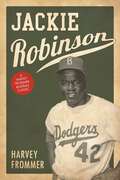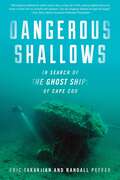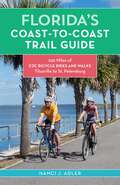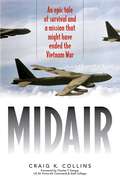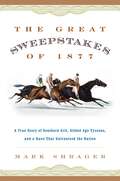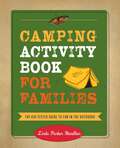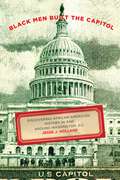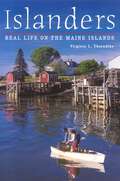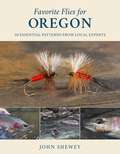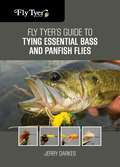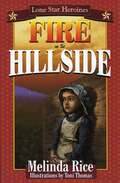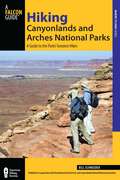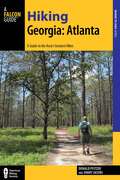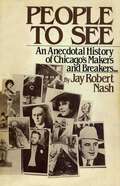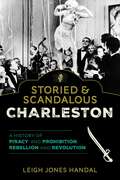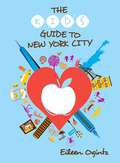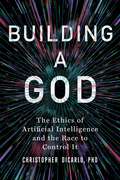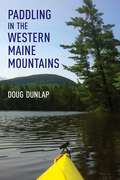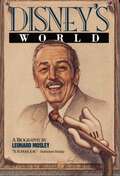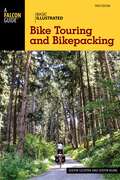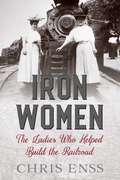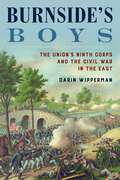- Table View
- List View
4,101 Ways Nature Makes Us Smile: A Guide to Finding Happiness in the Outdoors
by Barbara Ann KipferDiscover the Joy of the Outdoors with a List of 4,101 Ways Nature Makes Us Smile!4,101 Ways Nature Makes Us Smile is a celebration of the simple pleasures and endless wonders waiting just outside your door. This inspiring guide invites readers to enjoy the outdoors in a simple and fun, illustrated list style. It reminds us that nature is for everyone—no special gear or experience required. From the rustle of leaves to the thrill of discovering a sea turtle hatchling, every moment spent outdoors offers connection, joy, and a reason to smile!
Jackie Robinson
by Harvey FrommerThis sensitive commentary on Jackie Robinson's life describes his childhood in Pasadena, through his years as a sports hero, to his later involvement in politics and the Civil Rights movement. Harvey Frommer has drawn upon interviews with Robinson's family, friends, and fellow ball players to tell the story of a courageous man who triumphed over bigotry and personal tragedy to take his place in the hearts of millions of Americans.
Quick & Easy Christmas
by Gooseberry PatchSpend more time celebrating and less in the kitchen! Quick & Easy Christmas, a new book in the best-selling Gooseberry Patch series, is filled with easy, inexpensive recipes. They&’re quick to fix since each is ready in under 30 minutes or starts with just 8 ingredients or less...so simple! Heartwarming holiday memories and clever tips for easy-to-make gifts are also included...features for which Gooseberry Patch holiday books are known.
Dangerous Shallows: In Search of the Ghost Ships of Cape Cod
by Randall Peffer Eric TakakjianDangerous Shallows tells the story of a quest to solve maritime cold-cases. The odyssey takes the reader along for a moment-by-moment look at the events surrounding the loss of more than twenty different ships, and includes the stories of discovering their wrecks and learning about the final hours of each of these ships.
Florida's Coast-to-Coast Trail Guide: 250-Miles of C2C Bicycle Rides and Walks- Titusville to St. Petersburg
by Nanci AdlerFlorida's Coast-to-Coast Trail Guide is a guidebook designed specifically for the 250-mile dedicated bicycle/pedestrian trail that provides an uninterrupted cross-Florida trail from Titusville to St. Petersburg. The trail (over 80% complete and to be completed by 2025) already attracts not only local cyclists and walkers, but also out-of-state cycling enthusiasts. This book provides readers with a broad background of the communities through which they will travel. Although maps are included, this is not a detailed "how-to" guide, nor does it provide extensive lodging, camping or restaurant information; much of that information changes frequently and can be easily obtained via online searches. Instead, this book focuses on interesting cultural and natural aspects of the route. By highlighting the local flavor of small towns, the beauty of natural Florida, as well as local historical events, this book will introduce readers to the uniqueness of Florida. Distinctive features covered in the book include the Greek heritage of Tarpon Springs, Winter Garden's thriving downtown based on its citrus and bass-fishing past, Titusville's role in space exploration, and St. Petersburg&’s lively waterfront and flourishing art scene. Also covered is the natural world of beautiful freshwater springs, moss-shrouded oak trees, and migratory birds found in protected areas along the trail such as Gemini Springs Park, Brooker Creek Preserve and the Green Swamp. In addition, readers will be introduced to important historical Florida figures such as civil rights leaders Harry T. and Harriett V. Moore and Russian entrepreneur and railway builder Peter Demens.
Midair: An Epic Tale of Survival and a Mission That Might Have Ended the Vietnam War
by Craig K. CollinsMidair is a true account of one of the most remarkable tales of survival in the history of aviation – a midair collision at 30,000 feet by two bomb-laden B-52s over a category 5 super typhoon above the South China Sea during the outset of the Vietnam War. Authored by Craig K. Collins, the nephew of B-52 pilot Maj. Don Harten, Midair is an historically important work that is about more than survival. Interwoven through Harten&’s dramatic story of his million-to-one struggle against near-certain death is a previously unexamined look at how America had developed an aerial battle plan that would likely have ended the Vietnam conflict in under a month during the late winter of 1965. Instead, the country&’s war planners and politicians veered off course and into a bloody eight-year quagmire. Harten was on the February 1965 top-secret mission – a massive B-52 bombing raid of railways, supply depots, and airfields in and around Hanoi – that was called off in mid-flight. That mission and battle plan was mothballed until Dec. 18, 1972, when it was dusted off and dubbed Linebacker II, effectively ending the war within a week. Over 120 B-52s bombed Hanoi-area military installations for eight consecutive days. As a result of the heavy bombing, the North Vietnamese declared a truce, attended peace talks in Paris in early January and signed the Paris Peace Accords, ending hostilities in Vietnam on Jan. 27, 1973.It is the gripping tale of a young Air Force officer&’s first combat mission that instantly pulls the reader in and never lets up.
The Great Sweepstakes of 1877: A True Story of Southern Grit, Gilded Age Tycoons, and a Race That Galvanized the Nation
by Mark ShragerIn 1877 the members of the United States Senate postponed all business for the day so that they might attend a horse race—the iconic, polarizing post-Civil War event at the center of this story. The nation, still recovering from the depredations of the Civil War and the Reconstruction that followed, recognized it as a North vs. South encounter, pitting New York&’s powerful thoroughbred Tom Ochiltree and New Jersey&’s Parole—owned by the ostentatious Northern tycoons Pierre and George Lorrilard—against the already legendary &“Kentucky crack,&” Ten Broeck—owned by the teetotaling, plain-living Frank Harper and ridden by black jockey and former slave William Walker—representing a former slave state and its Southern values. The race and the colorful cast of characters involved reflected the still seething America during one of the nation&’s most difficult and divisive periods. Shrager presents a fascinating and heart-pounding piece of history exposing the racial and economic tensions following the Civil War that culminated in one final race to the end.
Camping Activity Book for Families: The Kid-Tested Guide to Fun in the Outdoors
by Linda HamiltonWinner of the 2017 Independent Publisher Book Award in the Children's Interactive category!Camping Activity Book for Familiesoffers up a wide variety of activities, games, crafts, songs, and goodold-fashioned fun for parents and children to share in the wonders ofthe outdoors. Whether it&’s creating pinecone art and giant nestsor going on nature-themed scavenger hunts, observing the nightsky, or playing flashlight tag at the campground, this book gets thewhole family engaged in everything outdoors. With age-specificrecommendations, activity suggestions for parents, family conversationstarter sidebars, and kids-only tips, this book has fun activities for everyminute and every age group.
Black Men Built the Capitol: Discovering African-American History In and Around Washington, D.C.
by Jesse HollandThe first book of its kind, with comprehensive up-to-date detailsHistoric sites along the Mall, such as the U.S. Capitol building, the White House and the Lincoln Memorial, are explored from an entirely new perspective in this book, with never-before-told stories and statistics about the role of blacks in their creation. This is an iconoclastic guide to Washington, D.C., in that it shines a light on the African Americans who have not traditionally been properly credited for actually building important landmarks in the city. New research by a top Washington journalist brings this information together in a powerful retelling of an important part of our country&’s history.In addition the book includes sections devoted to specific monuments such as the African American Civil War Memorial, the real &“Uncle Tom&’s cabin,&” the Benjamin Banneker Overlook and Frederick Douglass Museum, the Hall of Fame for Caring Americans, and other existing statues, memorials and monuments. It also details the many other places being planned right now to house, for the first time, rich collections of black American history that have not previously been accessible to the public, such as the soon-to-open Smithsonian Institution National Museum of African American History and Culture, and the Martin Luther King, Jr., National Monument, as well as others opening over the next decade. This book will be a source of pride for African Americans who live in or come from the D.C., Maryland, and Virginia area as well as for the 18 million annual African American visitors to our nation&’s capital. Jesse J. Holland is a political journalist who lives in the Capitol Hill neighborhood of Washington, D.C. He is the Congressional legal affairs correspondent for the Associated Press, and his stories frequently appear in the New York Times and other major papers. In 2004, Holland became the first African American elected to Congressional Standing Committee of Correspondents, which represents the entire press corps before the Senate and the House of Representatives. A graduate of the University of Mississippi, he is a frequent lecturer at universities and media talk shows across the country.
Islanders
by Virginia ThorndikeVirginia Thorndike, Maine's own version of Studs Terkel, traveled to all the Maine coast islands that still maintain a year-round population and persuaded the islanders to talk openly about their lives. The result is a compulsively readable, unvarnished, and appealing portrait, much of it in the islanders? own words. The 15 islands not accessible by bridge that still have year-round populations are: Isle au Haut, Islesboro, the Cranberry Isles (near Mt. Desert Island), Eagle Island, Long Island (Frenchboro), Long Island (Casco Bay), Matinicus, Monhegan, North Haven, Swans Island, Vinalhaven, Peaks, Chebeague, Great Diamond, and Cliff.
Favorite Flies for Oregon: 50 Essential Patterns from Local Experts (Favorite Flies)
by John SheweyThe state of Oregon is a fly-fishing paradise. From famous trout rivers such as the Deschutes and Metolius, to steelhead on the Umpqua and the Rogue, to abundant smallmouth on the John Day, Oregon has it all. Editor-in-chief of American Fly Fishing magazine and long-time Oregon resident John Shewey showcases 50 flies that are essential for anyone planning a trip to this state. Each fly pattern is accompanied by a stunning, detailed image with a recipe. Shewey, a recognized authority on West Coast flies and their histories, not only explains how to fish and rig each pattern but also includes interesting historical information that makes this book the perfect complement to other fishing guides to the state.
Fly Tyer's Guide to Tying Essential Bass and Panfish Flies (Fly Tyer)
by Jerry DarkesBass and panfish flies tend to be relatively easy to tie, and Fly Tyer&’s Guide to Essential Trout Flies will take advantage of this near-universal appeal. At 128 pages and with the popular, hidden-spiral binding, the title is both accessible and utilitarian.
Fire on the Hillside (Lone Star Heroines)
by Melinda RiceThe spring of 1847 is approaching and Katherine Haufmann has just moved to Fredericksburg, Texas with her family from Germany. As she struggles to get used to her new home, 13-year-old Katherine becomes intrigued by the mysterious fires that start appearing in the nearby hills. While the rest of the town focuses on peace talks with the Comanche, Katherine decides to discover the cause of those fires.The Lone Star Heroines series brings to life real events in Texas history and shows young readers how girls living during those exciting times experienced and even contributed to those dramatic events. Each book in the series includes a chapter of background stories and pictures of the actual people who lived them.Look for other stories of The Lone Star Heroines Series, and the Lone Star Heroes series for boys, too.
Way I See It: A Look Back at My Life on Little House
by Melissa AndersonWhen other girls her age were experiencing their first crushes, Melissa Sue Anderson was receiving handwritten marriage proposals from fans as young, and younger, than she was. When other girls were dreaming of their first kiss, Melissa was struggling through hers in front of a camera. From age eleven in 1974 until she left the show in 1981, Melissa Anderson literally grew up before the viewers of Little House on the Prairie.Melissa, as Mary, is remembered by many as &“the blind sister&”—and she was the only actor in the series to be nominated for an Emmy. In The Way I See It, she takes readers onto the set and inside the world of the iconic series created by Michael Landon, who, Melissa discovered, was not perfect, as much as he tried to be. In this memoir she also shares her memories of working with guest stars like Todd Bridges, Mariette Hartley, Sean Penn, Patricia Neal, and Johnny Cash.In addition to stories of life on the set, Melissa offers revealing looks at her relationships off-set with her costars, including the other Melissa (Melissa Gilbert) and Alison Arngrim, who portrayed Nellie Oleson on the show. And she relates stories of her guest appearances on iconic programs such as The Love Boat and The Brady Bunch.Filled with personal, revealing anecdotes and memorabilia from the Little House years, this book is also a portrait of a child star who became a successful adult actress and a successful adult. These are stories from &“the other Ingalls sister&” that have never been told.
Hiking Canyonlands and Arches National Parks: A Guide to the Parks' Greatest Hikes (Regional Hiking Series)
by Bill SchneiderLace up your boots and sample more than sixty of the finest hiking trails in southeastern Utah, where the breathtaking canyons, multicolored sandstone arches, and magnificent spires of Canyonlands and Arches National Parks provide the setting for countless outdoor adventures. Let veteran hiker Bill Schneider lead you past eight sandstone arches on the Devils Garden Trail in Arches National Park; take you over slickrock to the Harvest Scene panel in the remote Maze District; and show you the sweeping view of White Rim Country through awesome Mesa Arch in the Island in the Sky District. With Hiking Canyonlands and Arches National Parks in hand, you'll discover the most spectacular trails and amazing scenery Utah's red rock country has to offer.Inside you'll find:Accurate directions to popular as well as less-traveled trailsIn-depth trail informationDifficulty ratings for each hikeDetailed trail mapsGPS coordinates for all trailheadsOutstanding color photographyWhether you're a day-tripper or long-distance hiker, old hand or novice, you'll find trails suited to every ability and interest in Hiking Canyonlands and Arches National Parks.
Hiking Georgia: A Guide to 30 Great Hikes Close to Town (Hiking Near)
by Jimmy Jacobs Donald PfitzerHiking Near Atlanta will offer 30 trails of varying difficulty in and around greater Atlanta. Complete with up-to-date trail information and maps, GPS coordinates for trailheads, and photos throughout, this book is perfect for people of all ages and skill levels.
People to See: An Anecdotal History of Chicago's Makers and Breakers
by Jay Robert NashPeople to See is an irreverent and revealing portrait of the merchant princes and magnates Marshall Field, William Randolph Hearst, P.K. Wrigley, George Pullman; crime kings Roger Plant, Al Capone, Arnold Rothestein, who fixed the 1919 World Series and "Shoeless Hoe" Jackson who played it that way; Richard J. Daley and the long line of his predecessors who insisted Chicago was not ready for reform; the proud pioneers of journalism and literature, Ben Hecht, Carl Sandburg, Nelson Algren, Saul Bellwo, Gwendolyn Brooks; and the rich heritage of Chicago sports.This is social history dominated by vivid personalities—regal and raffish characters with a talent for making out, moving up, and having their own way. They lived and often died with old-style flair and flamboyance and Jay Robert Nash presents their stories with exactly the right flavor.All the scattered fragments of the record of these originals have been searched and woven into the fabric of Chicago history. Here are zesty chronicles of those who imposed their wills in pursuit of power, profit, and pleasure int he great inland city that yields only to the bold.
Storied & Scandalous Charleston: A History of Piracy and Prohibition, Rebellion and Revolution
by Leigh Jones HandalQuaker William Penn once described "Charles Town" as &“a hotbed of piracy,&” full of wayward women &“who frequented a tap room on The Bay and infected a goodly number of the militia with the pox.&” Since the Carolina Colony was founded and named for Charles II, the Merry Monarch, it&’s no surprise that Charlestonians have always had a flair for flouting the rules. In the 18th century, Bostonian Josiah Quincy complained that Charlestonians, &“are devoted to debauchery and probably carry it to a greater length than any other people.&” In Storied & Scandalous Charleston, storyteller Leigh Jones Handal weaves tales of piracy, rebellion, ancient codes of honor, and first-hand accounts of the madness that ensued as the city fell first to the British in 1780 and then to the Union in 1865. Meet some of the foremost female criminals of the day—lady pirate Anne Bonny and highwaywoman Livinia Fisher. And learn how centuries of war, natural disasters, bankruptcy, and chaos shaped modern Charleston and the Carolina Low Country.
The Kid's Guide to New York City (Kid's Guides Series)
by Eileen OgintzBefore you plan your family&’s next Big Apple excursion, get some help from a professional . . . and from your kids! The Kid&’s Guide to New York City lets the kids help plan the trip and guides you as you explore the city, neighborhood by neighborhood. Inside you&’ll find kid-tested tips on where to go, where to eat, what to see, and where to get the best souvenirs. Along the way the kids will be engaged by sharing fun New York facts and cool tips. Awesome games will keep everyone busy as you crisscross the city on foot, by subway or bus, or in a cab.
Building a God: The Ethics of Artificial Intelligence and the Race to Control It
by Christopher DiCarloRenowned ethicist provides essential guide to successfully navigating the future AI landscapeIn Building a God, Christopher DiCarlo explores the profound implications of artificial intelligence surpassing human intelligence—a destiny that seems not just possible, but inevitable. At this critical crossroad in our evolutionary history, DiCarlo, a renowned ethicist in AI, delves into the ethical mazes and technological quandaries of our future interactions with superior AI entities.From healthcare enhancements to the risks of digital manipulation, this book scrutinizes AI&’s dual potential to elevate or devastate humanity. DiCarlo advocates for robust global governance of AI, proposing visionary policies to safeguard our society. AI will positively impact our lives in myriad ways: from healthcare to education, manufacturing to sustainability, AI-powered tools will improve productivity and add ease to the most massive global industries and to our own personal daily routines alike. But, we have already witnessed the tip of the iceberg when it comes to the risks of this new technology: AI algorithms can manipulate human behavior, spread disinformation, shape public opinion, and impact democratic processes. Sophisticated technologies such as GPT-4, Dall-E 2, and video Deepfakes allow users to create, distort, and alter information. Perhaps more troubling is the foundational lack of transparency in both the utilization and design of AI models. What ethical precepts should be determined for AI, and by whom? And what will happen if rogue abusers decide not to comply with such ethical guidelines? How should we enforce these precepts? Should the UN develop a Charter or Accord which all member states agree to and sign off on? Should governments develop a form of international regulative body similar to the International Atomic Energy Agency (IAEA) which regulates not only the use of nuclear energy, but nuclear weaponry as well?In this incisive and cogent meditation on the future of AI, DiCarlo argues for the ethical governance of AI by identifying the key components, obstacles, and points of progress gained so far by the global community, and by putting forth thoughtful and measured policies to regulate this dangerous technology.
Paddling in the Western Maine Mountains
by Doug DunlapMore than twenty outings are included in this paddling guide to the rivers, ponds, and lakes of the Western Maine mountains and foothills. Seasoned Registered Maine Guide Doug Dunlap had paddled all of these routes multiple times and provides information for full day and overnight trips, as well as short paddles. Also included are practical advice and tips, safety information, maps and put-in and take-out locations, and information on wildlife that can be seen in the area, historic locations, and scenic areas.
Disney's World
by Leonard MosleyDocuments the stunning accomplishments of Disney's imaginative genius. It is not a flattering portrait. Library Journal
Basic Illustrated Bike Touring and Bikepacking (Basic Illustrated Series)
by Justin Lichter Justin KlineRichly illustrated and information-packed tools for the novice or handy reference for the veteran, BASIC ILLUSTRATED books distill years of knowledge into affordable and visual guides. Whether you&’re planning a trip or thumbing for facts in the field, the BASIC ILLUSTRATED series shows you what you need to know.Discover how to: Choose the proper bikeSelect appropriate gearProperly pack your equipmentIdentify the best routes
Iron Women: The Ladies Who Helped Build the Railroad
by Chris Enss**2022 Will Rogers Medallion Award Silver Winner for Western Non-Fiction**When the last spike was hammered into the steel track of the Transcontinental Railroad on May 10, 1869, at Promontory Point, Utah, Western Union lines sounded the glorious news of the railroad&’s completion from New York to San Francisco. For more than five years an estimated four thousand men mostly Irish working west from Omaha and Chinese working east from Sacramento, moved like a vast assembly line toward the end of the track. Editorials in newspapers and magazines praised the accomplishment and some boasted that the work that &“was begun, carried on, and completed solely by men.&” The August edition of Godey&’s Lady&’s Book even reported &“No woman had laid a rail and no woman had made a survey.&” Although the physical task of building the railroad had been achieved by men, women made significant and lasting contributions to the historic operation. However, the female connection with railroading dates as far back as 1838 when women were hired as registered nurses/stewardesses in passenger cars. Those ladies attended to the medical needs of travelers and also acted as hostesses of sorts helping passengers have a comfortable journey. Beyond nursing and service roles, however, women played a larger part in the actual creation of the rail lines than they have been given credit for. Miss E. F. Sawyer became the first female telegraph operator when she was hired by the Burlington Railroad in Montgomery, Illinois, in 1872. Eliza Murfey focused on the mechanics of the railroad, creating devices for improving the way bearings on a rail wheel attached to train cars responded to the axles. Murfey held sixteen patents for her 1870 invention. In 1879, another woman inventor named Mary Elizabeth Walton developed a system that deflected emissions from the smoke stacks on railroad locomotives. She was awarded two patents for her pollution reducing device. Their stories and many more are included in this illustrated volume celebrating women and the railroad.
Burnside's Boys: The Union's Ninth Corps and the Civil War in the East
by Darin WippermanUnique among Union army corps, the Ninth fought in both the Eastern and Western theaters of the Civil War. The corps&’ veterans called their service a &“geography class,&” and others have called the Ninth &“a wandering corps&” because it covered more ground than any corps in the Union armies. With the same attention to detail that he gave to the First Corps in First for the Union, Darin Wipperman vividly reconstructs life—and death—in the Ninth Corps. The roots of the Ninth Corps lay in the early 1862 coastal expeditions in the Carolinas under Ambrose Burnside. After this successful campaign—a master class in Civil War amphibious warfare that turned Burnside into a star—Burnside&’s units coalesced into a corps, part of which reinforced Pope&’s Army of Virginia at Second Bull Run during the summer of 1862. The Ninth fought with the Army of the Potomac in the Maryland campaign in September 1862, first at the Battle of South Mountain and then, in its most famous action, at Antietam, where it suffered 25 percent casualties attempting to seize what became known as Burnside&’s Bridge. Three months later, the corps was lightly engaged at the Battle of Fredericksburg, during which Burnside commanded the entire Army of the Potomac.After the disaster of Fredericksburg, the Ninth—again under Burnside—spent much of 1863 in the West with the Army of the Ohio, performing occupation duty in Kentucky and then in Grant&’s campaign to take Vicksburg, Mississippi. It fought in Tennessee and helped take Knoxville before returning East, a shell of itself thanks largely to disease. Reorganized, the Ninth joined Grant&’s Overland Campaign in Virginia, fighting—with horrifying losses—at the Wilderness and Spotsylvania. It joined the siege of Petersburg, including the infamous Battle of the Crater in July 1864, and remained at Petersburg through the end of the war, where it participated in the assault that broke the siege in April 1865, forcing Lee&’s army into retreat, and final defeat, at Appomattox.From the Carolinas to Maryland, from Kentucky, Mississippi, and Tennessee to Virginia, the Ninth Corps sacrificed for the Union—and burnished its place in the annals of the American Civil War.

